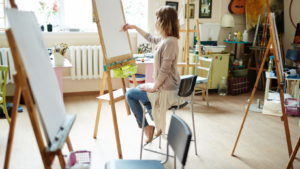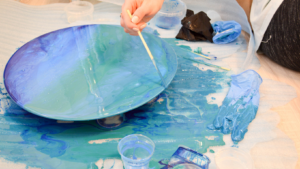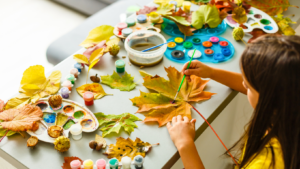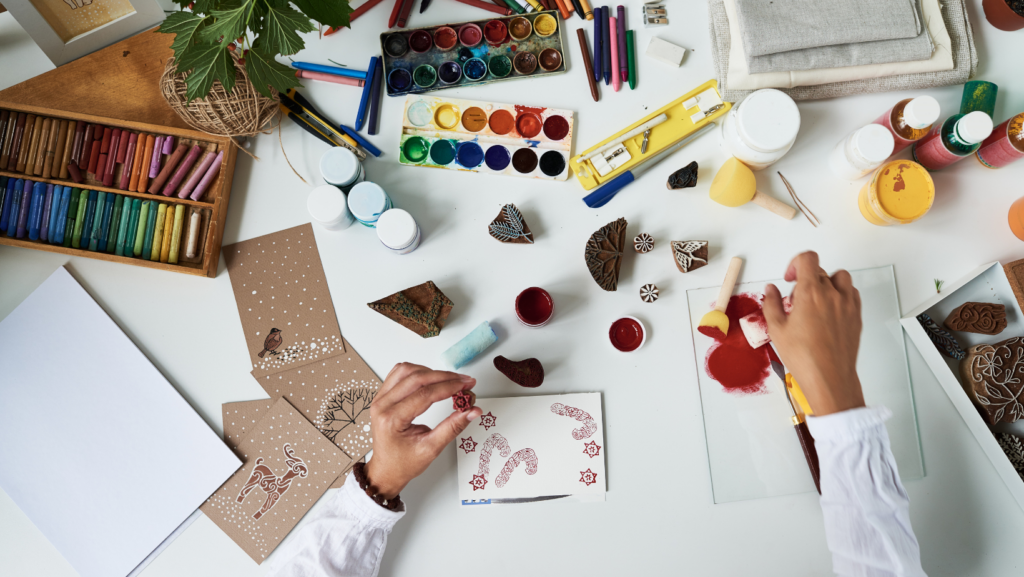The world of art is as diverse as it’s fascinating. Among its myriad forms, one stands out for its unique approach – creative process art. This art form isn’t just about the final masterpiece; it’s about the journey of creation, where the process is as significant as the end product.
Diving into creative process art can be a transformative experience. It’s a realm where artists don’t just express, but explore, experiment, and evolve. It’s a space where creativity isn’t confined to a canvas, but spills over into the artist’s thought process, techniques, and even their understanding of art itself.
Join us as we delve into the captivating world of creative process art, unravel its essence, and discover how it’s redefining the boundaries of artistic expression.
Creative Process Art

Delving deeper into the realm of creative process art, it’s essential to grasp its definition and significance in the artistic world. This section unpacks the intricacies of this unique art form, starting from its definition to its impact on artistry.
Creative process art, as the phrase suggests, isn’t just about the end product; it’s fundamentally about the discovery and experimentation that occur during the creation process. This genre focuses on the progression or transformation through which an artist goes, hence attaching value to the journey as opposed to solely the outcome. When engaged in creative process art, artists enter a state of constant evolution, pushing boundaries and frequently venturing beyond their comfort zones.
Exploring Different Styles in Creative Process Art
In both traditional and contemporary art spheres, creative process art exhibits a range of styles, demonstrating its fluid nature. It encompasses various approaches, highlighting the significance of the creative journey in its entirety.
Traditional Styles and Process Art

Traditionally, creative process art incorporates a multitude of techniques that artists have employed over the centuries. Rich in historical influences, this conventional approach often leans toward time-tested methods such as painting, sketching, or sculpting. The process itself unfolds at a deliberate pace, allowing artists ample time to probe and meditate. In traditional styles, the artists focus on honing their skills, thus paving the way for a natural exploration of new avenues. For instance, the classic ‘Chiaroscuro’ technique plays with light and dark contrasts, encouraging artists to find balance within their works. This gradual exploration, crucial to the creative process, underscores the duality of artistic expression.
Contemporary Styles and Process Art
Modern-day artistic practices, on the other hand, take on a more dynamic stance. Contemporary styles in creative process art unleash unbounded imagination, transcending conventional norms. Here, artists often use unconventional materials, including digital media and environmental elements, to redefine their creative expression. The process, spontaneous and experimental, dares artists to abandon expectations and embrace unpredictability. For example, explore ‘Instillation Art’, a contemporary subset. This style uses three-dimensional works to transform a space, offering immersive experiences to viewers. These novel interpretations foster a revitalized understanding of the creative process and its immersive potential.
Creative Process Art’s Role in Cultural Evolution

Creative process art, steeped in the ethos of exploration and transformation, propels cultural evolution. It feeds the undercurrents of creativity, offering fresh perspectives transcending the mundane. For instance, the dynamic works of abstract expressionists in the mid-20th century initiated a cultural shift, prompting the audience to engage with art in unprecedented ways.
Ancient civilizations bear testimony to its potency: from the intricate cave paintings in prehistoric times to the grandeur of Renaissance artworks. Each era used the medium of art to narrate its tales, shaping cultural identity and historical narrative with their unique forms and ideas.
Contemporary creative process art continues its influence by pushing boundaries in digital and immersive realms. Artists like Refik Anadol blend artificial intelligence and art, transporting viewers into virtual dimensions and reimagining cultural narratives.

